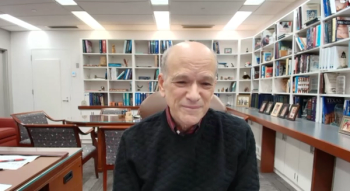
- Vol 31 No 9
- Volume 31
- Issue 9
The Association Between Major Mental Disorders and Geniuses
Genius and madness: does one phenomenon cause the other-or do both share a common underlying factor or mechanism? How are geniuses able to accomplish “creative fits”? The author explores both questions.
There are many [awe-inspiring] wonders, none greater than a human being.
-Sophocles, Chorus in Antigone
There exists an association between creativity and major mental disorders known since antiquity. The ancient Greeks considered both as “having been touched by the gods.” Aristoteles, in his perspicacity, stated, “There is no genius without having a touch of madness.” This phenomenon has been verified repeatedly in studies in the past.1-4 Does one phenomenon cause the other or do both share a common underlying factor or mechanism? How are geniuses able to accomplish “creative fits”? In this article, both questions are addressed.
Although the proposed origin and mechanism of the brain function of creative geniuses is novel, empirical evidence is available to support this theory. Empirical evidence demonstrates that creativity and major mental disorders share a common pool made up of individuals with an extreme temperamental variant who, if endowed with other qualities (eg, high intelligence, tenacity, curiosity, energy) and live in a nurturing and complementary zeitgeist, can be creative geniuses. On the other hand, persons with a similar temperament but who do not have the additional qualities form a common pool of individuals who are at increased risk for a major mental disorder.5
Temperament
A few remarks regarding temperament are warranted, since they are cogent and relevant to the discussion in this article. Temperament is defined as the particular inborn behavioral propensities for each individual, which ultimately represents the final brain structural reality. It not only acts as an unfinished scaffold upon which the personality of the individual is formed, but it also guides the significance of environmental influences that are eventually embedded in the scaffold. Both constitute, along with learned attitudes and ethos, the final personality of the individual.
Temperamental components appear to originate from two areas from our evolutionary past and are expressed in distinct clusters. The first cluster originates from the evolutionary pressures on the individual, expressed as selfishness, inner directness, aloofness, and self-serving calculations. The second area/group originates from the evolutionary pressures on the social aspects of human experience, such as sociability, connectedness,
From an evolutionary standpoint, the normally occurring small temperamental variability, or traits, confers flexibility and resilience for the survival of the tribe as a whole, irrespective of advantage or even disadvantage to the individual. Importantly, the mix of the temperamental components are often not distributed evenly but appear as clusters originating mainly from one or the other part of our human nature. This creates the often lopsided temperamental types (eg, the extrovert and the introvert).
In creative geniuses, there exists a major variation from the norm of the inborn temperament. This variant lies beyond the normally occurring variability. Referring to major mental disorder, Freud called it “narcissistic neuroses.”8 This extreme variant is also seen in other individuals at risk for major mental disorders. When and if a major mental disorder does develop (probabilistically amenable to prediction only by statistical methods), the individual’s preexisting lopsided traits manifest as premorbid personality.5
Findings from clinical empirical evidence indicate that this extreme variant originates mainly from evolutionary pressures and is shared by potential geniuses and other vulnerable individuals. Schizophrenia, bipolar disorder, and obsessive-compulsive disorder are the 3 conditions that develop most frequently in vulnerable individuals. These conditions can overlap or switch from one to another. Relapses have traditionally been attributed to comorbidity; however, each syndrome might be considered as a different phase of the same disorder. Clinical evidence points to a
These individuals are to various degrees less social, more self-centered, and aloof. They may exhibit remarkable “learned” affability and civility, but they are, to various degrees, inner-directed, autonomous, and deficient in empathy and connectedness. They tend to “think” the world rather than “feel” it. Persons with this temperament, behave oddly and are often perceived as fickle, idiosyncratic, peculiar, or strange. They are often dysphoric and tend to feel an “inner void, and aloneness within.”
Occasionally this progresses to episodes of precipitous depression and can lead to suicide or substance abuse. These individuals exhibit a kind of “Robinson Crusoe of the spirit,” although as in the case of talented performers, it may generate great merriment, affection, and enthusiasm in their audience (an example might be the recent death of the much-loved actor Robin Williams). These individuals are racked by doubts and mood oscillations, and they are often captives of compulsive rituals.
Proposed mechanisms
A great portion of our brain’s function is normally allocated for social intercourse and for the “give-and-take” inherent in myriad social interactions. Humans are social creatures, our phenomenal
The absence or deficiency of the social algorithms in brain function frees enormous power in the brains of these temperamentally lopsided individuals. This power then becomes available for creative processes in the right individual. Creative persons are now able to think in alternatives, and conciliate and synthesize patterns to come up with novel solutions to seemingly intractable problems and/or create stirring works of art that emotionally mobilize us to narratives of human predicaments. Moreover, creative geniuses envision new and compre- hensively applicable paradigms of nature’s workings. They bypass our evolutionary limits of comprehension and invent ways to access the mathematical arrangement of nature, thereby conceiving, for example, quantum mechanics. Although often exhibiting a learned civility, these individuals may nevertheless be deficient in understanding the algorithms that help us perceive and comprehend the emotional gestalt, state of mind, and intentions needed for social interaction.
This lopsided variant, deficient in social algorithms, may be related to the autistic spectrum (eg, savants who can recite the list of an entire telephone book) or to
CASE VIGNETTE
Two years after graduating from the police academy, Officer Ryan suffered a gunshot wound to the head that resulted in left frontal lobe brain injury. Before the incident, he had no interest in art and had never taken any courses in art. After the injury, in addition to moderately reduced cognitive alacrity and being somewhat “socially clueless,” Officer Ryan begins to exhibit a sudden talent for painting portraits of remarkable talent. Also endowed with high intelligence, tenacity, curiosity, persistence of effort, energy, and enthusiasm, Officer Ryan has now become a creative genius.
Creative individuals
Individuals with this type of so-called brain deficiency exhibit exuberant confidence as national leaders and religious figures. Matched with guile and charm, such persons are often the rare individuals who are gifted with charisma. The charismatic individual is able to transform nations or create religious movements by playing to our social nature. He or she uses our innate yearning for certainty in a world of uncertainty and ambiguity to lure us into unreflecting submissiveness to his or her dictates.
Creative individuals are prone to be “cyclothymic,” while scientists and engineers predominantly tend to be “schizoid.”1-3 Unfortunately, creative geniuses are more vulnerable to major mental disorders.5 There are many examples of this phenome- non throughout history. Charles Darwin was aloof, obsessive-compulsive, and a hypochondriac.11 His co-discoverer and fellow genius, Alfred Wallace, was also aloof and a lonely wanderer. Nikola Tesla was often mentally compromised, and Wolfgang Amadeus Mozart suffered from mood swings. Beethoven was periodically depressed; Tolstoy was a strange, otherworldly, idiosyncratic aristocrat; and let’s not forget the periodically outright psychotic, super-genius Isaac Newton. Albert Einstein was an aloof man who mistreated his second wife Elsa (who was also his cousin). He gave away his illegitimate daughter, sight unseen, although on the surface he displayed social affability and charm.12
More recently, Steve Jobs, a very intense, compulsive genius, exhibited signs of cyclothymia.13 He was able to recruit the creative powers of others and literally built the realm of computer technology. Yet, under oath, he swore impotence and sterility to avoid the obligations to his illegitimate daughter. And the list goes on and on.
Winston Churchill had periodic dark moods, Theodore Roosevelt had mood oscillations, and the often melancholy and otherworldly Abraham Lincoln and Alexander the Great were seized by demonic fits.
Creative individuals share a similar lopsided temperament with other individuals who are vulnerable to major mental disorders.2 Their temperamental components are an extreme variant that originates from evolutionary pressures. Although deficient in social algorithms, this releases enormous brain power that enables these unencumbered individuals to excel in creative activities. Individuals also endowed with high intelligence, curiosity, persistence of effort, tenacity, energy, and enthusiasm are able to reach heightened levels of creativity in art, science, and politics.
Conclusion
The readily observable phenomena discussed here provide promising leads for future studies in molecular genetics and evolutionary biology, which will bring us closer to understanding the origin of temperament and its variability. Most important, further studies may identify temperamental clusters that increase the risk of a major mental disorder.
Acknowledgment-I am grateful to my daughter, Nicole, for helping me edit and organize the content for this article.
Disclosures:
Dr Pediaditakis practices psychiatry full-time, consults, and writes articles and poetry. He raises Black Angus cattle as a hobby. He reports no conflicts of interest concerning the subject matter of this article.
References:
1. Hare E. Creativity and mental illness. Br Med J (Clin Res Ed). 1987;295:1587-1589.
2. Andreasen NC. Creativity and mental illness: prevalence rates in writers and their first-degree relatives. Am J Psychiatry. 1987;144:1288-1292.
3. Jamison KR. Touched With Fire: Manic-Depressive Illness and the Artistic Temperament. New York: Free Press; 1996.
4. Lombroso C. The Man of Genius. Whitefish, MT: Kessinger’s Publishing Rare Reprints; 2010.
5. Pediaditakis N. Origins and mechanisms in the development of major mental disorders: a clinical approach. J Behav Brain Sci. 2012;2:269-275.
6. Wilson EO. The Social Conquest of Earth. New York: Liveright Publishing Corporation; 2012.
7. Nowak MA, Tarnita CE, Wilson EO. The evolution of eusociality. Nature. 2010;466:1057-1062.
8. Freud S. New Introductory Lectures on Psycho-Analysis. New York: WW Norton & Company, Inc; 1965.
9. Pediaditakis N. Shared characteristics in the clinical expression and pharmacological responses of mental disorders and their possible collective significance. Med Hypotheses. 1998;50:347-352.
10. Cross-Disorder Group of the Psychiatric Genomic Consortium. Identification of risk loci with shared effects on five major psychiatric disorders: a genome-wide analysis [published correction appears in Lancet. 2013;381:1360]. Lancet. 2013;381:1371-1379.
11. Desmond A, Moore J. Darwin: The Life of a Tormented Evolutionist. London: Penguin Books Ltd; 1991.
12. Isaacson W. Einstein: His Life and Universe. New York: Simon & Schuster, Inc; 2007.
13. Isaacson W. Steve Jobs. New York: Simon & Schuster, Inc; 2011.
Articles in this issue
over 11 years ago
Factors That Predispose Patients to Treatment-Resistant Depressionover 11 years ago
Management of Treatment-Refractory Schizophreniaover 11 years ago
Psychiatry’s Underground Economyover 11 years ago
How I Got Schooled in Ancient Psychiatryover 11 years ago
My Anniversaryover 11 years ago
Sexualized Transference in Older Adultsover 11 years ago
Patient Resistance in Eating Disordersover 11 years ago
Boyhoodover 11 years ago
Roadblocks to Opiate AbuseNewsletter
Receive trusted psychiatric news, expert analysis, and clinical insights — subscribe today to support your practice and your patients.

















